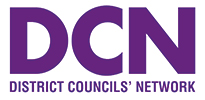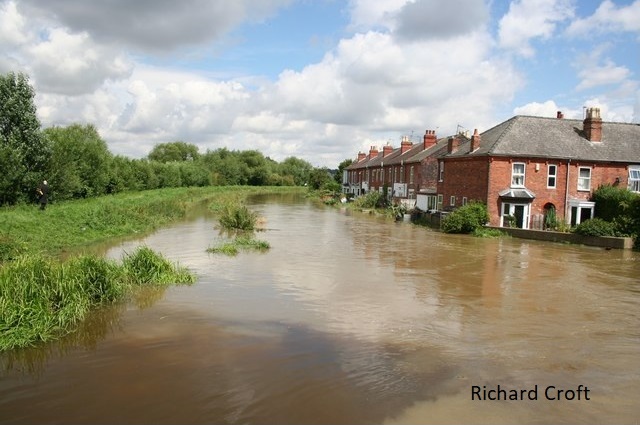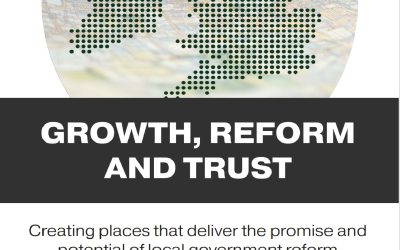People living in areas at risk of flooding face cuts to local services due to the Government’s failure to devise a fair system to fund the rapidly rising cost of flood defences.
The District Councils’ Network is calling on the Government to bring in a new system for funding Internal Drainage Boards, the bodies that oversee flood alleviation in the lowest-lying land areas, so investment can take place to allow housebuilding and economic growth without further penalising local residents. Local citizens already pay millions of pounds to maintain flood defence through their council tax bills.
Internal drainage boards, which protect nearly one million properties, have seen their costs rise by an average of 28% in the two years since 2022-23, mainly as a result of higher energy and fuel prices, increasingly extreme wet weather events and wage increases. Taxpayers in areas affected face a total bill this year of £49.94m, paid primarily through council tax and landowner levies.
Under the current system, district councils – or unitary councils in some areas – collect levies on behalf of Internal Drainage Boards, which are themselves small public bodies. By law, when special levy charges are agreed, they have to be paid by councils. However, there are strict Government restrictions on maximum council tax bill rises – 2.99% or £5 on a Band D bill for district councils. With councils unable to increase their total bills in line with the Internal Drainage Boards’ extra costs, they have less money to pay for services.
The council areas facing the highest increases are:
| Council | Levy rise 23-24 to 24-25 | % Increase |
| East Lindsey | £1.37m | 35 |
| Boston | £0.71m | 33 |
| South Holland | £0.58m | 20 |
| Doncaster | £0.50m | 35 |
| Kings Lynn & West Norfolk | £0.42m | 16 |
In the case of Boston Borough Council, for example, the drainage levy makes up 22% of its £12.76m annual net budget. The authority collects £4.33m in council tax, of which 61% goes on the drainage levy.
Much of the increase is explained by higher energy costs, including the standing charges paid for energy regardless of how much you use. This can be particularly costly for pumping stations that are used infrequently but nevertheless vital at times of heavy rain. The Middle Level Commissioners, which manage water levels in the Fens, faces a 509% increase in its standing charges.
Cllr Sam Chapman-Allen, Chairman of the District Councils’ Network, said: “It is only by properly funding flood prevention that defences can be maintained over vast swathes of the country and we avoid catastrophic flooding threatening life and livelihood.
“Internal Drainage Authorities have little option but to pass their higher costs onto councils – and in response councils have no choice but to further cut back on the local services which are vital for supporting local communities and growing local economies.
“The areas affected are the homes and workplaces of millions of people, and are vital for in achieving our national priorities – growing our economy, building new homes and enhancing food security.
“We urge ministers to work with us to ensure those living in areas at risk of flooding are not unfairly penalised through the form of higher tax bills and a reduction in the services upon which we all depend.”
Cllr Paul Redgate, Chairman of the Local Government Association Special Interest Group for Internal Drainage Board levies and Deputy Leader of South Holland District Council, said: “Internal Drainage Boards do a fantastic job in managing water levels and flood risk. They provide a vital service which is appreciated and valued by local authorities.
“The funding challenges for Internal Drainage Boards cannot be underestimated – the funding mechanism has progressively impacted our councils since 2013 and the challenge has intensified dramatically in the last two years.
“The embedded cost is one that our councils simply can no longer afford. Its impact is becoming more significant every year that passes and it is not going to go away. We need the Government to listen and work with us to deliver a long-term solution at pace. Councils are already in a precarious position on the services they can afford to provide and have difficult decisions to come.
“The special interest group – now at 33 members – has more than doubled in membership since it formed nine months ago, such is the level of concern among councils. Resolving the funding issue remains high on all our agendas and we will not stop until funding change is delivered.”
The Association of Drainage Authorities is working closely on supporting councils on the issue. Innes Thomson, the association’s Chief Executive, said: “Internal Drainage Boards are working as hard as they can to keep costs under control whilst providing essential water level and flood risk management services to local communities, businesses and the environment.
“The current special levy payments process, which has worked well in the past, is now clearly not working, with local councils bearing the consequences when they can least afford to. The new Government has the ability to resolve this issue and the Association of Drainage Authorities (ADA) will work with all parties to that end.”
Among the potential funding solutions are:
- The Government funding the full costs of IDBs to councils, given that a relatively small proportion of councils are affected
- Removing the council tax cap to allow councils to collect sufficient funds
- Legislation to remove IDB levies from the council tax requirement.
Background information
Facts about Internal Drainage Boards
- 112 IDBs in England protect 1.18 million hectares of land (just under 10% of total land area of England)
- 625 pumping stations operate and maintain over 22,000km of watercourse
- They directly reduce flood risk to over 600,000 people who live/work in IDB boundaries and 880,000 properties, including:
- 50,000 farms and landholdings – including 50% of England’s Grade 1 agricultural land
- 129 miles of motorway and 910 miles of railway
- 56 power stations.
- It takes up to seven years to recover land that is flooded with saltwater.
- IDBs manage water levels in and around 400 environmental sites of special scientific interest (SSSI).
Source: Association of Drainage Authorities
The Internal Drainage Board Special Levy
Until the 1970s IDBs collected their special levy directly from households, businesses and landowners. However, then councils began collecting it on IDBs’ behalf, for administrative ease.
The Special Levy was subsequently spread over all households in a district council area, rather than just those in the land affected. The Special Levy was then consumed into the council’s overall council tax requirement, which was then capped but funded by the Government through Revenue Support Grant – then the main plank of councils’ funding.
Revenue Support Grant has been dramatically reduced since 2013-14, leaving councils to fund the IDB levies through council tax. The Government has imposed maximum council tax increases on authorities, leaving councils with little money available to both fund vital flood prevention work and their other valuable services.






